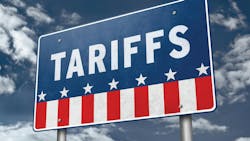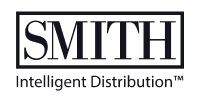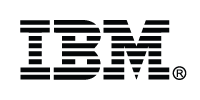Tariff Pressures Keep Supply Chains on Edge
Download this article in PDF format.
Tariff uncertainty continues to pose new challenges for U.S. supply chains, industry sectors and individual businesses. While some of the turmoil seems to have calmed in the last month or so, there are still 30% tariffs on imports from Mexico and the European Union scheduled to take effect Aug. 1. And just last week, President Trump announced his intention to set tariffs for 150 small countries. This may effectively bump the “additional baseline tariff” rate to 15-20% (up from a current 10%).
Companies are now preparing for potentially higher costs and supply chain disruptions that could ensue, should new or higher tariffs go into effect. The proposed tariffs would impact a wide range of goods, including produce, electronics, medical equipment and alcoholic beverages.
As the trade environment continues to shift, businesses are also working to adjust sourcing, pricing and inventory strategies in real-time. They’re speeding up shipments, stockpiling goods, passing some additional costs onto their customers and generally working to maintain stability. With limited clarity on what the next round of tariffs will look like or how long they’ll remain in place, many supply chain operators remain in a state of flux at this midpoint in the year.
Rising Tariffs, Shifting Strategies
Tariffs clearly remain a moving target and may remain that way for the foreseeable future. Last weekend, for example, the president called for 30% levies on Mexico and the EU. According to CNN, the tariffs are set to take effect Aug. 1, “unless either party inks a trade deal or takes other measures that cause the president to reverse course. If that does not happen, Americans could get stuck paying more for an extensive list of goods.”
Electronics imports are firmly in the crosshairs of the new tariffs on Mexico, the U.S.’s biggest trading partner. “The top foreign source of electronic goods that came into the U.S. last year was Mexico,” CNN reports. “That includes $49 billion worth of computers, $20 billion worth of electrical equipment and $13 billion worth of audio and video equipment.”
Bracing for More Uncertainty
The U.S. Bureau of Labor Statistics’ consumer price index (CPI) of goods and services revealed that annual inflation rose to 2.7% in June, an increase from 2.4% the previous month. Core CPI, which excludes energy and food prices, ticked up to 2.9%, compared with 2.8% in May. “While sentiment was mixed among analysts on the degree of impact, the consensus was that tariffs were evident in the data,” Inside Supply Management® reports.
The publication goes on to say that the CPI and producer price index (PPI), though they ticked up in May, had been cooler than expected in recent months. “Markets have hovered near all-time highs as investors continue to bet that the White House’s actions on tariffs won’t match its words,” it adds. Some of the newer tariff announcements that ISM is tracking include:
- A 50% tariff on copper imports, effective Aug. 1.
- A duty of 50% on imports from Brazil, starting Aug. 1.
- A new tariff of 17% on Mexican tomatoes.
“According to The Budget Lab at Yale University,” the publication adds, “the current average effective tariff rate paid by U.S. consumers is 18.7%, the highest since 1933.”
Supply Chains in a Holding Pattern
With the latest round of tariffs set to take effect soon, businesses are watching closely for any last-minute negotiations or policy shifts. In the meantime, they’re also preparing for higher input costs, tighter margins and more pricing pressure across sectors.
And while forecasting the long-term impact remains difficult, some companies may shift sourcing or adopt new financing strategies to manage cash flow, while others may have to pass costs on to customers or cut back in other areas.
Until the trade environment stabilizes, supply chains will likely remain in a holding pattern, with many organizations delaying investment, watching the situation closely and waiting for more clarity before making any big moves.
About the Author
Avery Larkin
Contributing Editor
Avery Larkin is a freelance writer that covers trends in logistics, transportation and supply chain strategy. With a keen eye on emerging technologies and operational efficiencies, Larkin delivers practical insights for supply chain professionals navigating today’s evolving landscape.






